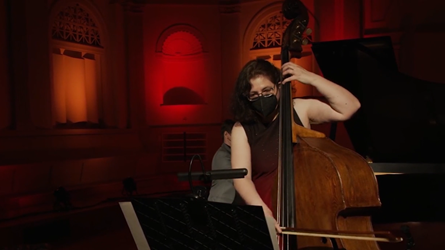Astor Piazzolla
Biography
Perhaps the most well-known exponent of the bandoneón, the composer and bandleader Astor Piazzolla was born in Mar del Plata, Argentina, although he was to spend the majority of his childhood in New York after his family emigrated there in 1924. Piazzolla’s formative years were spent in the rough Lower East Side and he was involved in gangs and street fights. Although he was introduced to the bandoneón at the age of eight, and his father was eager for him to become a tango musician, his mischievous nature foiled the efforts of his first teachers. His successive tutors had more luck and Piazzolla became somewhat of a child prodigy, being described as the ‘boy wonder of the bandoneón’ in a concert programme for ‘An Evening in Argentina’ at Roerich Hall, aged eleven. Piazzolla’s introduction into the world of tango was consolidated upon his return to Buenos Aires in 1937; during his time here, he was exposed to radio performances of the Elvino Vardaro Sextet (an exceptional tango group) and he gave concerts and made tango arrangements for the renowned bandleader Aníbal Troilo. Desiring greater creative freedom, Piazzolla later formed the Orquesta del 46 in order to perform his own compositions. Following its disbanding a few years later, Piazzolla examined the works of Stravinsky and Bartok, and won a scholarship for a symphonic composition to study with Nadia Boulanger in Paris; Boulanger encouraged his tango composition and Piazzolla’s distinctive and original compositional style, later referred to as ‘nuevo tango’, is one of his foremost accomplishments.
Piazzolla’s compositional output consists predominantly of film scores and tango music for a variety of ensembles. His style of ‘nuevo tango’ was at odds with tango traditionalists who initially saw his implementations of fugue, elements of jazz, extreme chromaticism, dissonance, and incorporation of extended instrumentation as not belonging in the tango genre. Piazzolla’s work gradually gained mainstream acceptance, first in France and the USA, then in Argentina, leading to his works being taken up by classical performers from the late 1980s.

